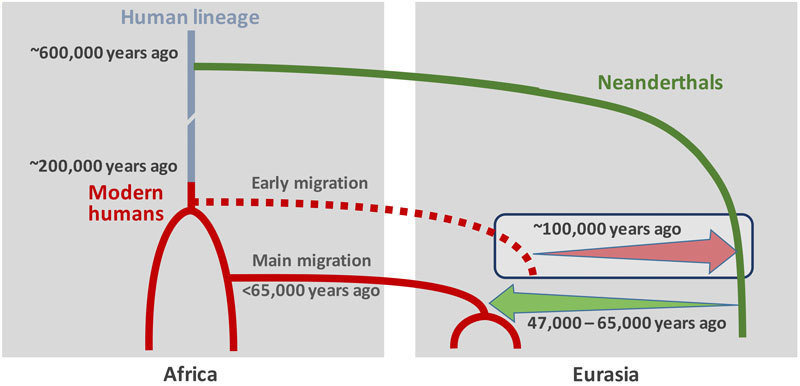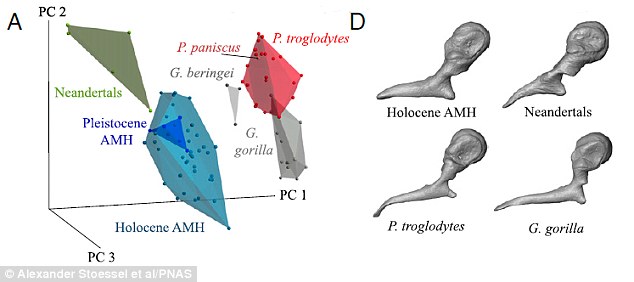Post by Admin on Oct 1, 2016 20:58:42 GMT
/cdn0.vox-cdn.com/uploads/chorus_asset/file/7126177/neanderthalensis_LaChapelle_aux_Saints_TE_3qtr_rt_sq.jpg)
Brian Resnick: There’s a line in your chapter about Neanderthals that stuck out to me. You wrote, "We can think of them [Neanderthals] only when we first cast ourselves as protagonists in the narrative of human evolution."
I take that to mean that when we discovered Neanderthals, our instinct was to see them as inferior.
Lydia Pyne: It’s uniquely human to feel very sure of our evolutionary success: that our evolutionary success must come at the expense of Neanderthals. That is very much an idea that starts to become ingrained at the beginning of Neanderthal studies, for sure.
BR: Can you tell me that story, of how we cast Neanderthals as the foil in our evolutionary narrative?
LP: The dominant narrative about Neanderthals is based on the work of a French paleoanthropologist, Marcellin Boule.
Boule is one of the premier paleoanthropologists at the beginning of the 20th century. His credentials are impeccable [the National Museum of Natural History in Paris].
When the Old Man of La Chapelle is discovered in 1908, the prehistorians who excavated that skeleton sent it to Boule for analysis.
/cdn0.vox-cdn.com/uploads/chorus_asset/file/7128779/Screen%20Shot%202016-09-19%20at%203.38.10%20PM.png)
Boule spends two years analyzing it. And of all the different characteristics he could have emphasized, he emphasized the primitive. His conclusion is that this Neanderthal is going to walk with a kind of hunched posture. He's going to have really divergent big toes, which is considered a more primitive characteristic.
We look at it today and say, "Geez, that was really biased." But I think it’s consistent with the materials he had.
BR: Why do you think scientists were hostile to (or biased against) the idea that these creatures could have been our equals?
LP: It’s an inherent bias or inherent desire to want [humans] to be unique. That there's something about our species — maybe it's language, maybe it's culture, maybe it's our ability to be bipedal and to walk on two legs — that gives us this kind of evolutionary success.
What starts out as sort of a description of anatomical characteristics ends up being sort of taken on a very moral pelt. Now we're talking not just about a primitive anatomical characteristic; we're talking about a primitive culture.
/cdn0.vox-cdn.com/uploads/chorus_asset/file/7094069/kupka-2.jpg)
[For scientists,] there needed to be some reason that Neanderthals went extinct. There's almost a sort of moral reading to it: We were more successful in evolution because of our ingenuity, because of our tools, because of our culture, or because of something that makes us uniquely human. And so, [Neanderthals were seen as] bumbling troglodytes who were barely able to make it across glaciated Europe.
What really strikes me is our need to create an "other" in our narrative. It’s a really powerful tool in how we tell our human narrative, for better or for worse. Even today.
BR: Was the interpretation influenced by religion? The idea that man was put on Earth to rule over the animals, and if we find fossils they must be in the "animal" category?
LP: I don't think it's quite so much divide between religion and science.
I think the story that ends up catching the public's imagination isn't the religious one; it's actually The Quest For Fire, J.H. Rosny's 1911 sci-fi novella. [It’s a story about how several ancient human-like species compete to make fire. In the story, Neanderthals’ fire is stolen by a warring clan of Homo erectus. Alas, the Neanderthals can use fire, but they don’t know how to create it for themselves. If this sounds familiar, it’s because The Quest For Fire was adapted for a 1981 film starring Ron Perlman.]

It’s a sympathetic character: "Oh, this poor Neanderthal, he can't make fire."
BR: But we’ve learned more about Neanderthals since then. We know Neanderthals were likely stronger than us and had bigger, thicker bones. Do you think they’ve been redeemed?
LP: Later, in the middle to second half of the 20th century, scientists and anthropologists begin to go back and look at Boule's original material. They’re starting to reexamine Neanderthals and look at their culture and look at their sophisticated tool use. [Boule mistook signs of aging on the Old Man, like a bad back, to be indicative of the whole species.]
We now say, "Oh, look, they have culture. They bury their dead. They can start fires. We're interbreeding. They're more human than we first thought."
There was a great publication a couple of months ago that points out Neanderthals carried fire starters. That's fascinating, right? I think that what happens is we keep saying they're more like us.











